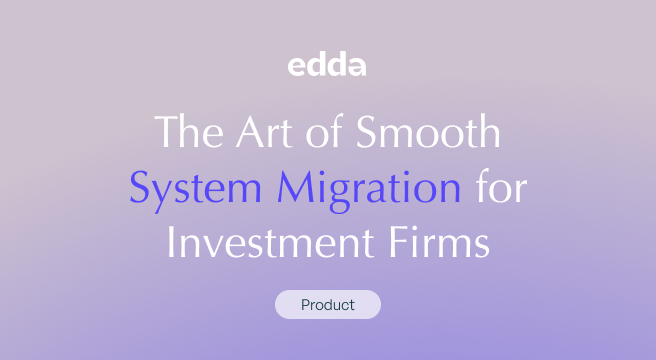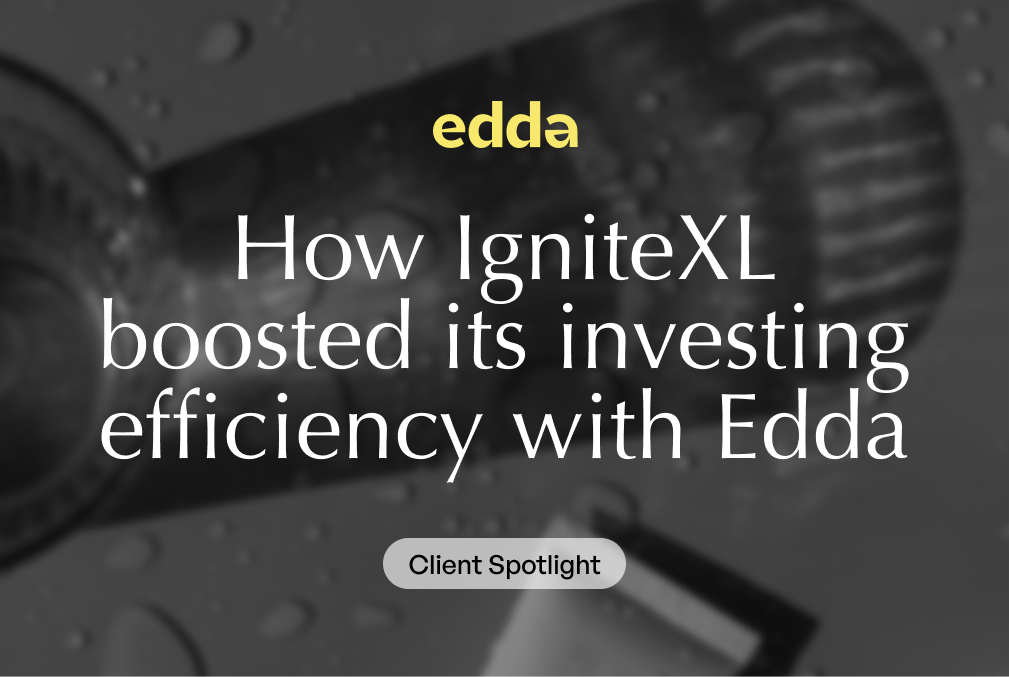Whether you’re dealing with venture capital SaaS or on-premise, transitioning to a new management system is a critical move for investment firms that involves preserving the integrity of historical data and ensuring minimal disruption to ongoing operations. This article provides valuable insights and strategies to help firms navigate this essential yet challenging transition.
We’ll explore key considerations, potential risks and challenges, and the benefits of a successful system migration. Whether you’re a small firm or a large institutional investor, this article will provide you with the knowledge you need to make a smooth transition to a new management system.
Understanding the Need for System Migration
The decision to migrate to a new system often stems from the need to access more advanced features, improved efficiency, or better data management capabilities. As investment firms grow and market demands shift, the limitations of existing systems become apparent, making migration an inevitable next step.
Upgrading to Advanced Technology
If your firm is running on outdated systems, you’re likely facing a host of challenges. First off, operational inefficiencies are a big issue — slow responses and frequent system crashes can really drag down employee productivity. These problems are made worse when your system can’t integrate well with newer software, leading to bottlenecks in your workflows and preventing you from fully leveraging advanced tools.
Another major drawback of outdated systems is the lack of automation and real-time data processing capabilities, which can slow down your decision-making processes and put you at a competitive disadvantage.
But it’s not just about operations. Security weaknesses and compliance issues in older systems can put your data at risk, which could harm your clients’ trust in you and damage your firm’s reputation. Plus, an old-fashioned user interface can reduce your staff’s efficiency and increase the chances of making errors that upset your clients.
Scalability for Growth
As your firm grows, you’ll likely begin to notice how your existing systems start to fall short. For instance, as you handle more data, you might experience slower processing times, causing delays in operations that are critical to your business. The challenge intensifies when managing larger and more diverse portfolios – your current system could struggle, leading to issues like inaccurate data management or insufficient reporting capabilities.
This inability to scale effectively can create bottlenecks in your daily operations and could potentially limit your firm’s growth prospects. It’s vital to have a system that can grow and adapt with your firm, ensuring that your operations remain efficient and secure as you expand.
Integration of Disparate Systems
As your firm expands, you’re likely to encounter the challenge of managing multiple systems, each designed for specific tasks. This situation often leads to operational hiccups — you might find your team spending excessive time inputting data into different platforms, struggling to synchronize information across systems.
When it comes to mergers or acquisitions, investment firms often need to consolidate different systems into a single platform to ensure consistency, reduce redundancy, and streamline operations across the newly formed entity.
Such fragmentation slows down your processes and increases the risk of data inconsistencies and errors. For instance, discrepancies in client information across platforms can lead to communication mishaps or errors in reporting, ultimately affecting client relationships and decision-making. By migrating to a unified platform, you streamline these disparate systems into a cohesive workflow.
Cost Efficiency
Holding on to older systems can turn into a financial burden for your investment firm due to their high maintenance and support costs. While transitioning to a newer system might seem like a significant undertaking initially, it can lead to substantial cost savings in the long run.
With a modern system, your firm can benefit from lower operational expenses and reduced spending on support. This shift also means a more effective utilization of your resources, helping you allocate your financial assets more strategically and efficiently.
Improved Customer Experience
If your investment firm continues using an outdated system, you risk falling short in delivering the quality of service your clients expect. Systems lacking advanced client relationship management tools, user-friendly client portals, and robust reporting capabilities can lead to frustration and dissatisfaction among your clients. They may find it challenging to access their portfolios, get timely and accurate reports, or communicate effectively with your team.
This can result in a diminished client experience, potentially eroding trust and loyalty, and making it harder for your firm to retain and attract clients in a competitive market. Upgrading to a more sophisticated system is essential to meet client expectations and maintain strong, enduring client relationships.
Data Consolidation & Better Analytics
If your firm continues to operate with a system that lacks advanced data consolidation and analytics, you’re missing out on vital insights that could drive better investment decisions. Upgrading to a system that excels in these areas allows you to gain a deeper understanding of investment performance, market trends, and risk assessment.
Having a comprehensive perspective is important for making well-informed decisions. Without it, your firm operates with a limited view, potentially overlooking critical information that could impact your investment strategy and results.
Strategies for Managing Migration Challenges
It is important to have a detailed and strategic plan in place when considering migration. This can help ensure a smooth and successful transition while mitigating any potential challenges that may arise.
Before you undertake system migration:
- Assess the full scope of the migration – understand what needs to be moved, how it will be moved, and the potential impact on your operations.
- Set clear, achievable objectives and outline a comprehensive roadmap that includes timelines and milestones.
- Involve key stakeholders in this planning phase to ensure all perspectives are considered.
- Prepare for unforeseen issues by establishing robust contingency plans.
This thorough planning phase lays the groundwork for a successful migration, minimizing risks and aligning expectations across your firm. Be sure you’re prepared for the common migration challenges outlined below.
Tackling Data Loss and Integrity Issues
The fear of data loss or corruption during migration is significant in maintaining data integrity. Not effectively managing this can lead to the irreversible loss of critical historical data, jeopardizing compliance and impairing strategic decision-making based on inaccurate or incomplete data sets.
To mitigate this risk:
- Conduct a thorough audit of your data – identify what needs to be transferred and any potential vulnerabilities.
- Implement robust data backup measures and consider a phased approach to migration, where critical data is moved in stages.
- Conducting a pilot migration with a subset of your data can provide valuable insights into potential challenges and allow you to refine your approach before full-scale implementation.
Minimizing System Downtime & Business Disruption
Downtime during migration can disrupt your business operations significantly. Failure to mitigate this risk could result in prolonged operational halts, negatively impacting client services and potentially leading to significant financial and reputational damage.
To minimize this risk:
- Plan the migration during off-peak hours or when it will have the least impact on your operations and clients.
- Utilize a parallel system setup where both the old and new systems run concurrently for a period.
- Have a clear rollback plan in case the new system faces unexpected problems post-migration.
Ensuring Compatibility with Existing Processes
Seamless integration with existing workflows and systems is essential for the new platform. Overlooking this aspect can lead to increased operational costs and inefficiencies, creating friction in daily workflows and potentially causing data inconsistencies.
To achieve this:
- Map out your current processes and understand how they interact with your existing system.
- Identify key integration points and potential areas of conflict.
- Update or modify existing processes for better compatibility.
- Engage with vendors early to understand integration capabilities and limitations.
- Conduct thorough testing to ensure that the new system integrates smoothly with your existing processes.
Facilitating User Adoption & Training
It’s imperative to ensure comfortable adoption by all users for a smooth transition. Oftentimes, change resistance can be a significant barrier. Ignoring the need for comprehensive training and support can lead to low adoption rates of the new system, underutilization of its capabilities, and persistent reliance on outdated, less efficient methods.
To overcome this:
- Develop a comprehensive training program tailored to different user groups within your firm.
- Engage users early in the migration process to understand their needs and concerns.
- Provide hands-on training sessions, supplemented with detailed documentation and support resources.
- Consider appointing system champions within your team who can aid their colleagues in adapting to the new system.
- Implement regular follow-up sessions and open lines of communication for feedback.
Managing Budget Overruns
Budget overruns are a common issue in system migrations. Not effectively controlling budget can lead to excessive spending, potentially draining resources from other critical areas and jeopardizing the overall financial health of the firm.
To manage this:
- Start with a realistic budget that includes a buffer for unforeseen expenses.
- Regularly monitor your spending against the budget throughout the migration process.
- Be proactive in identifying areas where costs could escalate, such as additional customizations or extended timelines, and address these issues early.
- Communicate with vendors about cost implications and the scope of work.
Maintaining Security and Compliance
The security of your data and compliance with relevant standards during migration is vital during migration. Failing to maintain stringent security and compliance standards during migration can expose the firm to data breaches, legal consequences, and a loss of client trust.
Collaborate closely with your IT team or an external security expert to ensure all aspects of data security and compliance are covered by:
- Conducting risk assessments.
- Ensuring the new system meets all regulatory requirements.
- Implementing necessary security protocols.
- Regularly updating your compliance documentation and policies to reflect the changes brought by the new system.
Addressing Technical Challenges
Technical challenges in migration can range from data mapping to system configuration. Neglecting technical intricacies can lead to a flawed or incomplete migration, creating operational vulnerabilities and potential system failures.
To tackle these:
- Ensure you have a team of skilled IT professionals, either in-house or through a partnership with a technology expert.
- Involve them from the initial planning stages to understand the technical requirements of the migration.
- Provide regular training and knowledge updates for your IT team.
Ensuring Continuous Improvement
Post-migration, it’s essential to not become complacent. Complacency post-migration can result in the new system quickly becoming outdated, hindering the firm’s ability to adapt to new challenges and opportunities.
To ensure continuous improvement:
- Regularly review and update the system to adapt to future needs.
- Stay abreast of technological advancements and be ready to scale or update the system as your firm grows.
- Garner regular feedback from users to provide insights into areas that need improvement.
Rigorous Data Validation and Testing
Before going live, rigorously test the new system to ensure it functions as expected. Skipping thorough testing may lead to critical issues being overlooked, resulting in operational disruptions and potentially costly errors once the system is live.
To avoid this:
- Validate data accuracy.
- Test system functionalities against your operational requirements.
- Ensure compliance with regulatory standards.
- Consider involving end-users in the testing phase, as they can provide practical insights into the system’s performance in real-world scenarios.
Effective Change Management
Change management is about more than just introducing a new system; it’s about transitioning your entire organization. Inadequate change management can result in resistance to the new system, lower morale, and a disconnect between the intended benefits of the migration and the actual user experience.
To effectively manage the change:
- Communicate the benefits and the rationale behind the migration to all stakeholders to get buy in.
- Address concerns proactively and ensure there’s clarity about the changes.
- Celebrate milestones and successes in the migration process to maintain positive momentum.
Transform Your Firm with Edda’s CRM for Investment Bankers
Remember, while migration poses challenges, the long-term benefits of a more efficient, secure, and scalable system are invaluable for the growth and success of your investment firm.
Edda’s venture capital management software centralizes the entire investment process, making it invaluable for preserving historical data integrity during migration. Its capabilities in deal flow, pipeline management, and robust deal flow CRM functionalities aid firms in streamlining operations and enhancing decision-making processes.
The venture capital portfolio management software is scalable, adapting to your firm’s growth and changing portfolio needs. Its integration with platforms like PitchBook provides access to essential market data, facilitating informed investment strategies. Edda is committed to user experience, offering a platform that supports effective team collaboration and communication, crucial during system migration. Its user-friendly interface ensures easy adoption across all team levels.
Adopting Edda’s VC and private equity CRM software is a strategic step towards enhancing operational excellence and securing a competitive edge in the market. It’s not just an upgrade; it’s an investment in your firm’s future, ensuring efficient data management, seamless collaboration, and insightful decision-making. Choose Edda for a comprehensive, secure, and efficient migration experience.









